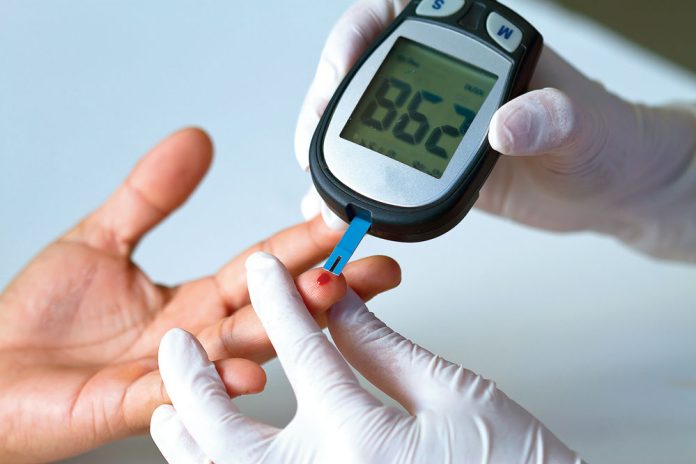There is a lot of recent debate about the relationship between diabetes and sugar and fructose is one of the factors being highlighted as a culprit.
This is why in this article, we’ll explore the connections between fructose and metabolic diseases like diabetes, helping you learn more about the issue and the best way to maintain your health.
What is Fructose?
Fructose is monosaccharide (single sugar) that can be found in fruit and vegetables. It is found in sucrose, also known as table sugar.
Fructose also occurs in large amounts within High fructose corn syrup an extremely processed sweetener that is widely used in Western countries. Thus, the majority the fructose in our diet is not derived from vegetables and fruits but instead comes from added sugars that offer substantial calories while being completely devoid of nutrients.
Like many other topics in nutrition, it can be difficult to definitively answer whether fructose is beneficial or not for your health. Let’s take a look at the evidence coming from both sides so that we can make a more informed choice regarding the potential effects of a diet high in fructose.
The Contention That Fructose Is Benign
Fructose is quite low in glycaemic index. This means that it doesn’t rapidly raise blood glucose levels as compared against other sugars. Furthermore, since it is more sweet than glucose, a lesser amount is required to produce the desired impact. This is why it was thought that fructose could be a useful sweetener that could replace other sugars, in particular for those with diabetes.
The Contention That Fructose Is Destructive
Unfortunately, the basic biochemistry described above does not paint the entire picture. There is increasing evidence suggesting that excessive consumption of fructose could adversely affect metabolic health in many ways.
Appetite
It is widely known that a hormone known as leptin can be released in the human body when insulin levels are elevated.
Leptin which stores in fat cells is thought of being a thermostat for our body. If leptin levels are low (indicating less body fat) then we feel more hungry and consume more food. In contrast, when leptin levels are high (indicating more levels of body fat) we do not feel less hungry, and consequently tend to eat less.
The small increase in insulin due to fructose consumption could cause a decrease in leptin levels leading us to eat more calories.
This view is backed by research that suggests that about 90 percent of Type 2 diabetics are either overweight or overweight. While there are many other ways to keep an appropriate appetite however, it’s reasonable to conclude that removing sugars that are added (that contain a high amount of fructose) is a great idea.
While it’s not the best time to conclude that fructose plays played a role in the obesity epidemic, researchers observe that the increase in fructose consumption is mirrored by the increase in the rate of obesity over the last couple of decades.
Fructose and the Liver
A bigger issue with excessive fructose is the way it is processed. Contrary to glucose, which is able to be utilized by every cell in the body for energy, fructose is able to only be metabolised by your liver.
The increasing use of added sugars in the common western diet in the last few years has resulted in an exponential increase in amount of fructose that we consume. This is not all, certain foods like fizzy drinks are also increasing the speed of the way fructose enters the body, placing further pressure on the liver.
It can get worse. If you have an ongoing high consumption of fructose the body adjusts by digesting and absorption of fructose at a higher rate and causing additional issues.
The body has the capacity for storing glucose in glycogen. Around 400g stored in muscles, and about 100g stored in the liver. Once the liver has been full of glycogen all excess sugar gets converted into fat which is retained in the liver or absorbed by triglycerides. By the way the presence of high levels of triglycerides is the most likely risk factors to develop heart disease.
The production of carbohydrate-derived fat is called de novo lipogenesis also known as DNL in short. Since this process takes place within the liver, it comes not be a surprise consumption of high fructose can result in an increase of excess liver fat (hepatic the steatosis).
If the fat content in the liver is more than five percent of the total weight, a doctor is able to diagnose NAFLD, also known as non-alcoholic fatty liver disorder (NAFLD). Incredibly, new research has revealed that NAFLD affects about a quarter of the adult population. The condition is not only a contributor to the risk of developing heart illness, but also a host of metabolic disorders, including type 2 diabetes.
The connection to NAFLD as well as type 2 diabetes may be a result of insulin resistance. Studies have shown that the higher the level of liver fat the greater the need for insulin to transport glucose into. Due to this, the pancreas must make more insulin, and this causes a higher resistance.
This vicious cycle that can last for a number of years, until the pancreas is destroyed since it’s in no way able to supply the needs for insulin any longer. This leads to blood sugar levels soaring. When the balance of liver homeostasis is disrupted, so is the metabolic health.
Step by step instructions to Detect NAFLD
Since NAFLD could precede diabetes and other metabolic problems by many years It is crucial to take care of this problem to get back in control over your health. As we’ve seen in the past, a substantial portion of people are living with a fat liver and the majority of them don’t know that they have it. This is among the main reasons Type 2 diabetes is predicted to impact 642 million people in the next generation.
A recognizable indicator of NAFLD is “central obesity’ which is defined by a significant waist circumference. It is interesting to note that the waist circumference is now regarded as a better indicator of health and fitness as compared to BMI, or body mass index (BMI). This is due to several reasons. The first is that BMI does not account for mass and doesn’t distinguish between fat mass and lean mass.
Additionally, two individuals with the same BMI may have different metabolic profiles because of the places the fat is stored. Fat under the skin (fat underneath the skin) is not aesthetically pleasing, but is actually quite harmless and has no influence on your metabolic health.
It is not the same for visceral fat, which cakes organs like the pancreas and liver. The measurement of your waist circumference gives an accurate indicator of the amount of visceral fat and thus metabolic health, in comparison to BMI.
As we discussed earlier, 90percent of people suffering from the type 2 form of diabetes classified as obese or overweight. What about the remaining 10 percent? For these people they are unable to store the tiny amount of fat they store is typically located in the organs, which is the primary reason for it.
So, what is the ideal waist circumference everyone should strive at? It is suggested that Dieticians of Canada recommend that men aim for less than 36 inches (90cm) as well as women should aim for less that 32inches (80cm). Anything that is higher than these figures are considered to be ‘central obesity’ and puts people at risk for various health problems.
Other health complications resulting due to a high Fructose Consumption
While metabolic disease is undoubtedly the most prevalent health problem caused by excessive fructose consumption, but it’s far from being the only possible complications.
Studies have proven that drinking massive amounts of fructose beverages that contain fizzy drink could quickly increase the amount of uric acid found in blood. Uric acid is a chemical that causes the formation of painful crystals in joints, an illness called gout.
Surprisingly the research of 2008 found that those who drank two drinks that were sweetened with sugar per day were almost 85% more likely develop gout than people who consumed the same amount during the course of one month.
We’ve previously discussed the way that excessive consumption of fructose increases liver fat as well as levels of blood Triglyceride. However, excessive levels of fructose in the diet can also boost the production of free radicals, harmful substances that can cause the “oxidative stress” on cells that can result in inflammation, damage and premature ageing.
Is Fruit Bad Awful for Me?
We’ve noticed that fruits are rich in fructose. We also know that fructose can be associated with type 2 diabetes as well as other metabolic disorders. The obvious question is, is it really harmful to your health?
Fortunately, since the majority of fruit is rich in fiber, it leads to a constant flow of natural fructose into the liver – a scenario which is manageable. Additionally, fruits contain minerals, vitamins and polyphenolic compounds that make it a healthy component of the diet.
100 years ago when the average person consumed 15-25g of fructose a day and the majority but not all being derived from natural sources like fruits. Fast forward to current day, and the average intake of fructose has risen to 60 grams per day, with teenagers consuming more than 72g daily. Incredibly, fructose accounts for to more than 10% of daily calories!
As you would expect, fruit does not contribute significantly to this excess consumption. The majority of fructose consumption is due to added sugars in ready-to-eat food snack foods, sweetened drinks and snacks which are rich in energy, but they are low in vital nutrients. This is the issue not fruit.
For a better understanding To give you a sense of perspective, a 500ml bottle Coke Original contains 53g sugar. Since the majority of the sugar content is fructose there are 26.5g of fructose in a bottle. If you consider this as the traditional western diet that is comprised of a variety of processed foods, it’s easy to understand how an average person is eating 60g of sugar a day.
In order to give a comparative of the cola bottle, you’d have to eat around 3 large apples five small bananas, 500g cherries or a kilo strawberries to consume the similar quantity of fructose. In the end, fruits aren’t the issue and should be an important part of a healthy lifestyle.
The nature and type of fruit has an effect on the effect it can have on our bodies. The juice of dried fruit and other fruits has significantly more fructose and lower levels of fibre than whole fruits in comparison. This is the reason it is recommended that the Department of Health recommend no more than 150ml fresh fruit juice daily.
So, if you’re worried about your fructose consumption It is a given that sugars added to food must be restricted. It is also recommended to stay clear of dried fruit or juices of fruit instead of eating fresh fruit.
Summary
Hopefully, this article has brought awareness of the potential detrimental effects of excessive fructose consumption and encouraged you to think about the amount of fructose you consume every day.
As with most subjects in nutrition the focus is on eating foods that are unprocessed, whole and limiting items that can be harmful to our metabolic health and waistlines is the best way to go.







